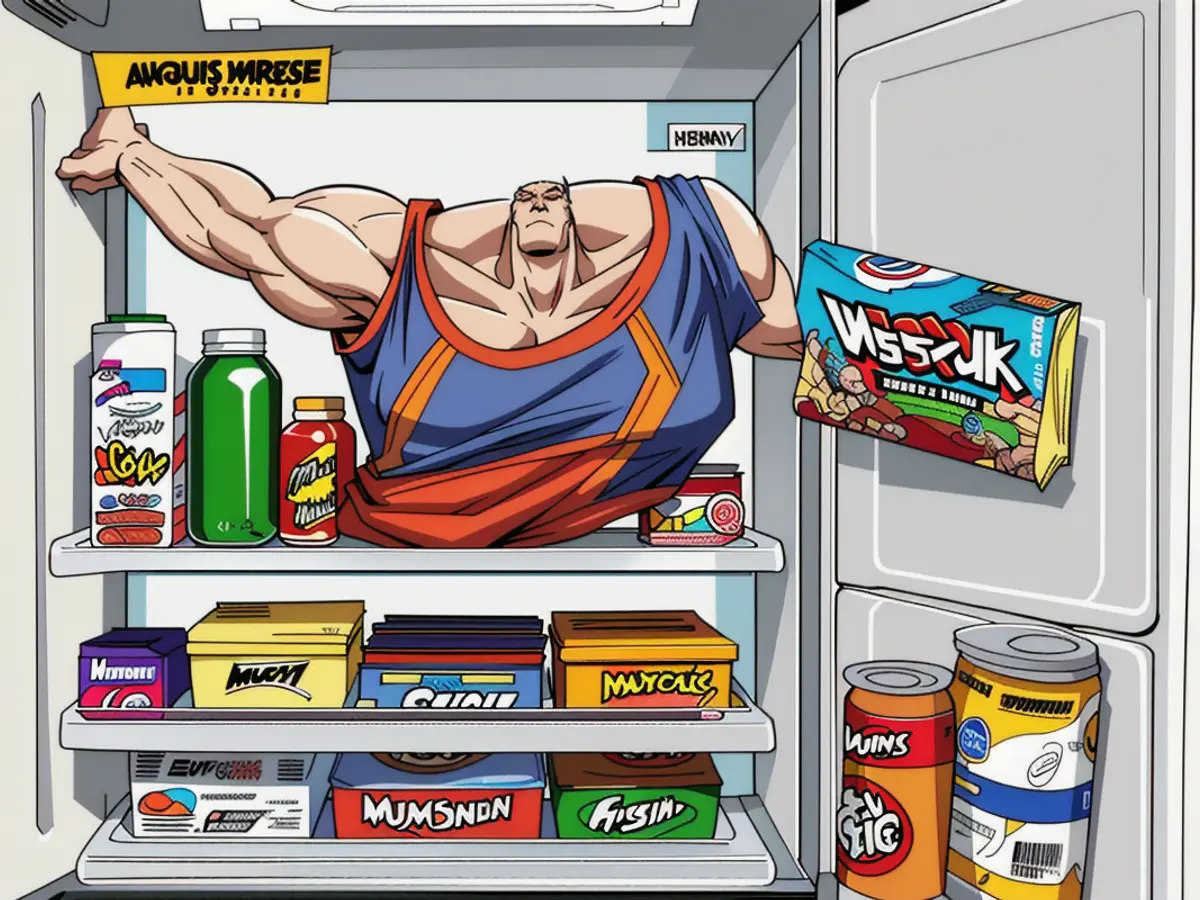Transforming Your Kitchen Layout for Convenient Healthy Eating Management
When it comes to eating, many people focus on stocking specific foods in the kitchen, but it's also important to consider how these foods are organized. Our eating habits are influenced by our environment, and the kitchen is where we make many choices related to food. Dietitians explain how to organize your kitchen for healthy eating, whether you're trying to curb snacking or cook healthier meals.
- Kristen Lorenz, RD, registered dietitian
- Dena Champion, MS, RDN, CSO, LD, CNSC, registered dietitian nutritionist at The Ohio State University Wexner Medical Center
- Heon L. Gray, PhD, RDN, registered dietitian nutritionist and associate professor at University of South Florida College of Public
Utilize Clear Containers
While you don't need a picture-perfect kitchen, storing your ingredients in a mindful way can inspire you to eat them. One simple technique is to use clear containers, which makes it easy to see your food. Registered dietitian Kristen Lorenz, RD, recommends this visual cue as it reminds you to use nutrient-rich options when preparing meals, ultimately turning your choices into effortless habits.
How to Do It
If a food storage set isn't in your budget, remember that simplicity is key. Take a tip from Dena Champion, MS, RDN, CSO, LD, CNSC, registered dietitian nutritionist at The Ohio State University Wexner Medical Center, and use inexpensive mason jars to store pantry staples like nuts, seeds, and whole grains. Another budget-friendly option is to collect old glass jars and repurpose them for food storage.
Clear containers are also a helpful reminder to utilize ingredients and leftovers in your refrigerator, says Lorenz. For example, storing items like carrots or celery in clear, breathable containers or bags will remind you to eat them.

Display Fresh Fruit
Some fresh fruit can be stored at room temperature, so why not use it as decor? This way, you'll be more likely to grab a piece of fruit while you're cooking or craving a snack, making your food choices easier.
How to Do It
Display fruits like bananas, apples, and tangerines in your living room or on the kitchen counter, recommends Heon L. Gray, PhD, RDN, registered dietitian nutritionist and associate professor at University of South Florida College of Public . Also, "put out a fresh batch every few days to make them easily accessible," she adds. To make the fruits even more appealing, present them in an attractive bowl that matches your home decor.
Batch Prep Staple Ingredients
Preparing nutritious ingredients ahead of time can be a game-changer for healthy eating. Having such foods ready to go reduces the temptation to grab convenience items. Champion echoes this notion, sharing that "we're often drawn to quick and easy foods when you open the fridge." This practice also minimizes the time needed to create a complete and delicious homemade meal.

How to Do It
Each week, spend some time cooking staples that can be used to build other meals. Examples include cooked quinoa and roasted vegetables, as suggested by Lorenz. This is best done about twice a week, as cooked food should be eaten within three to four days, per the experts at the United States Department of .
As for raw produce? In general, it's recommended to avoid washing and cutting fruits and vegetables before storing, as the excess moisture can speed up spoilage. But if pre-washing produce makes it easier for you to eat it quickly, go ahead and rinse it; just be sure to dry it well before storing, per the experts at Colorado State University.
Pre-Portion Foods
Many of us divide food into individual portions just before serving or digging in. However, this approach can make it difficult to control portions (particularly with snacks!), a key aspect of healthy eating. By divvying up food in advance, you can skip the guesswork and have individual portions at the ready.
How to Do It

"Divide ingredients into smaller portions based on your household size so you can easily grab and use [them] when you're ready to cook or eat," recommends Gray. This can be done as part of your weekly batch prep, as you can divide them as you go. Additionally, "for snack foods like chips, pretzels, or cookies, repackage them into containers as soon as you bring them home," suggests Lorenz. This will reduce the temptation to overeat directly from the bag, she says.
Place Healthy Options at Eye Level
Visibility is crucial in a healthy and organized kitchen. So, in addition to using clear containers, it's worth considering the placement of nutritious foods. Positioning ingredients where you can easily see them—that is, at eye level—will inspire you to choose such items regularly.
How to Do It
"Store your washed and ready-to-eat fruits and vegetables at eye level in your fridge," recommends Gray. After all, "if produce is front and center and ready to go, we're more likely to make healthy choices," says Champion. Similarly, in the pantry, "place nutritious staples like lentils, nuts, or whole-grain crackers at eye level," says Lorenz. "This positioning makes them your first option when you're hungry or meal planning."
If you find yourself facing challenges with ready-made or packaged foods, consider keeping them hidden away, like on a high shelf in your pantry or stored in opaque containers. This tiny barrier can help foster conscious eating habits and decrease impulsive snacking, according to Lorenz. You can also keep healthier options, such as packaged nuts or air-popped popcorn, easily accessible for balance.

Stocking Up on Canned and Frozen Goods
Contrary to common misconceptions, canned and frozen produce aren't any less nutritious than their fresh counterparts. In fact, they boast the same nutritional content, as mentioned by Gray. What's more, their longer shelf life makes it a breeze to keep a variety of fruits and vegetables on hand.
Strategies to Implement
Place canned goods at eye level in your kitchen and don't forget to check expiration dates regularly, advises Gray. For a more nutritious and balanced approach, group pantry items by food categories to facilitate meal planning. Furthermore, opt for canned and frozen products with minimal added salt and sugar for the most health-conscious option.
Dedicating a Section for Protein Rich Foods
Protein is an essential part of every meal, but preparing it can be time-consuming, especially when it comes to meat. By preparing protein-rich foods in advance and designating a specific area for them, meal construction will become a smoother process.
Steps to Take
Consider designating a shelf in your fridge for cooked or pre-prepared proteins like boiled eggs, shredded chicken, Greek yogurt, or shelled edamame. Another approach is to reserve a specific shelf in your pantry for canned beans and tinned fish, streamlining meal preparation and cooking.
- Using clear containers can inspire healthy eating habits by reminding you to use nutrient-rich options, as recommended by registered dietitian Kristen Lorenz.
- Registered dietitian nutritionist Dena Champion suggests using inexpensive mason jars to store pantry staples like nuts, seeds, and whole grains for a budget-friendly food storage solution.
- Martha Stewart's Cooking How-Tos Techniques and Living magazine can provide tips on organizing your kitchen for better food preparation and storage.




